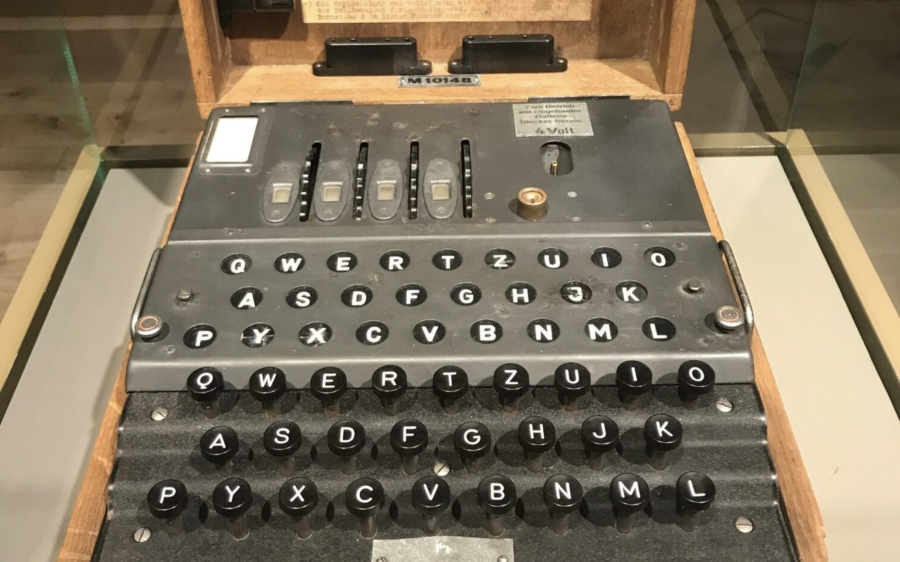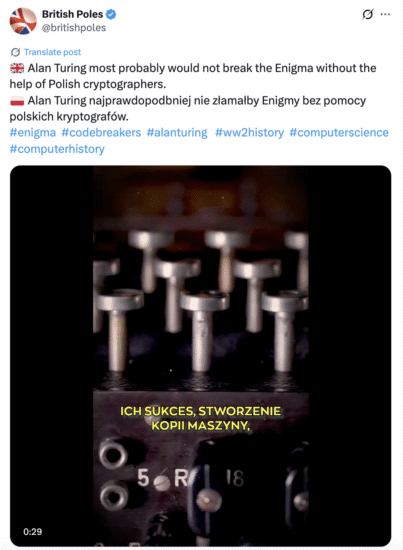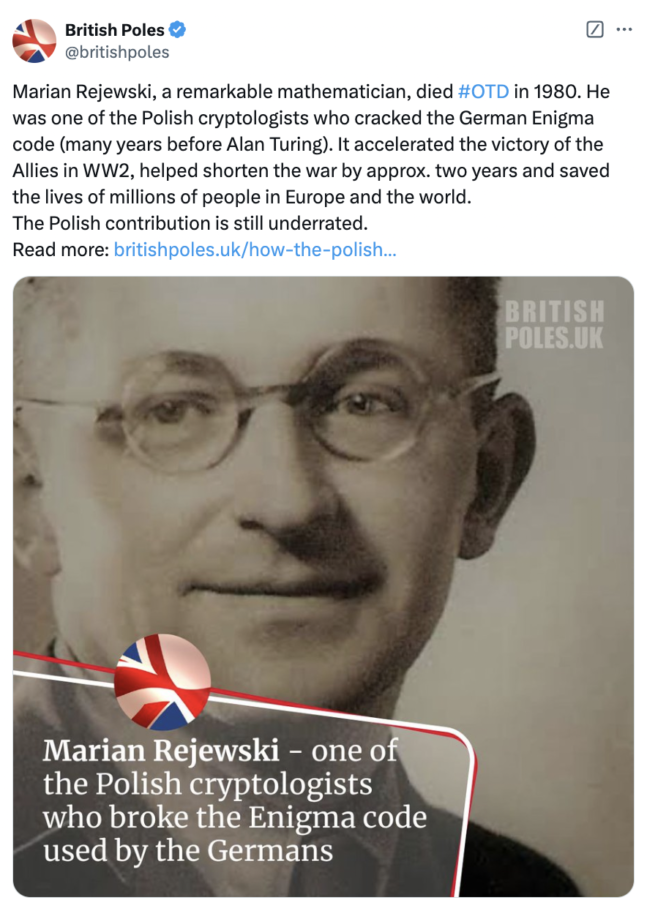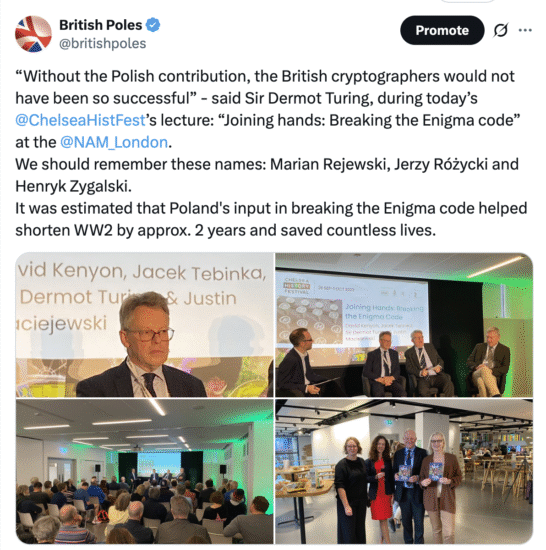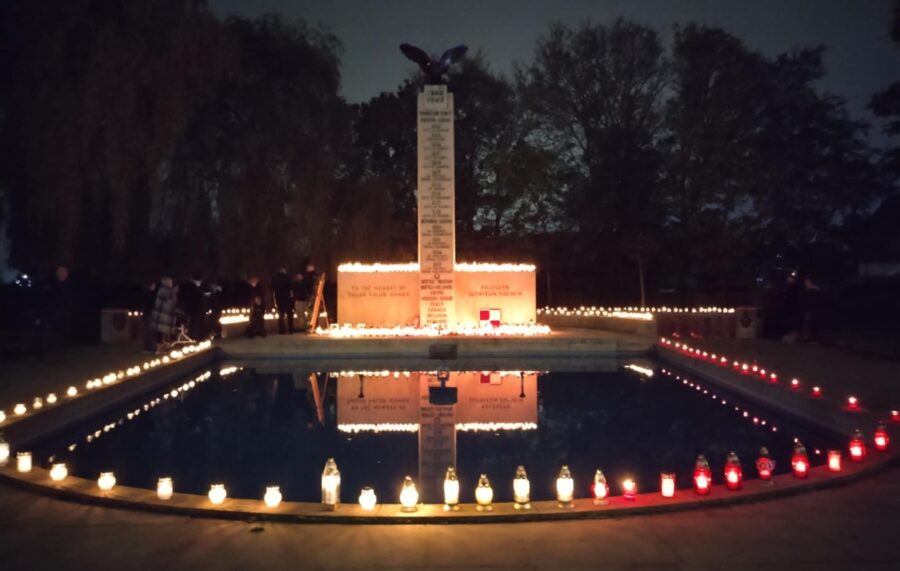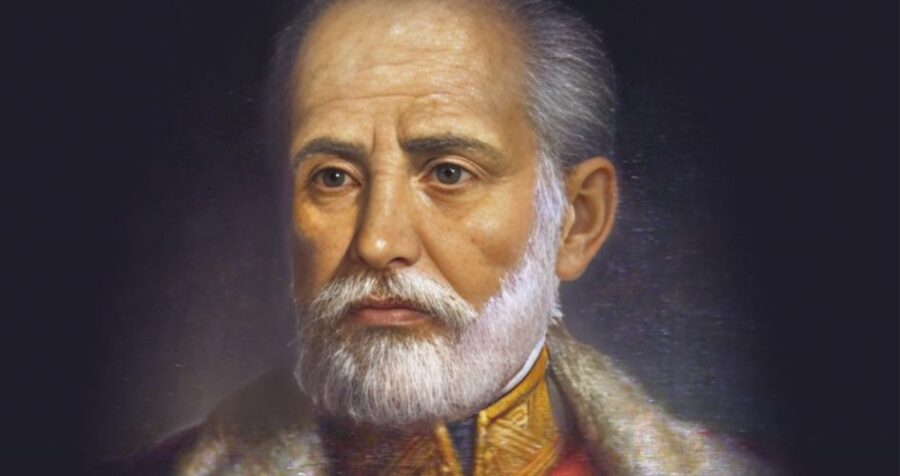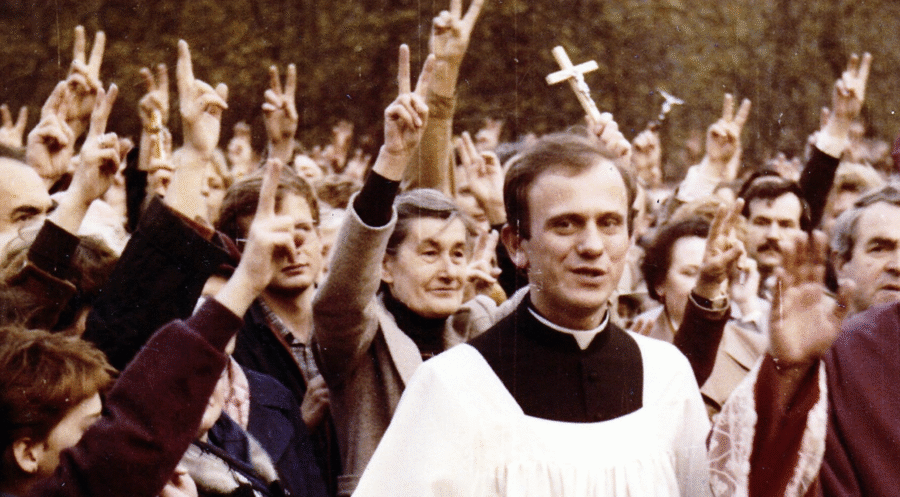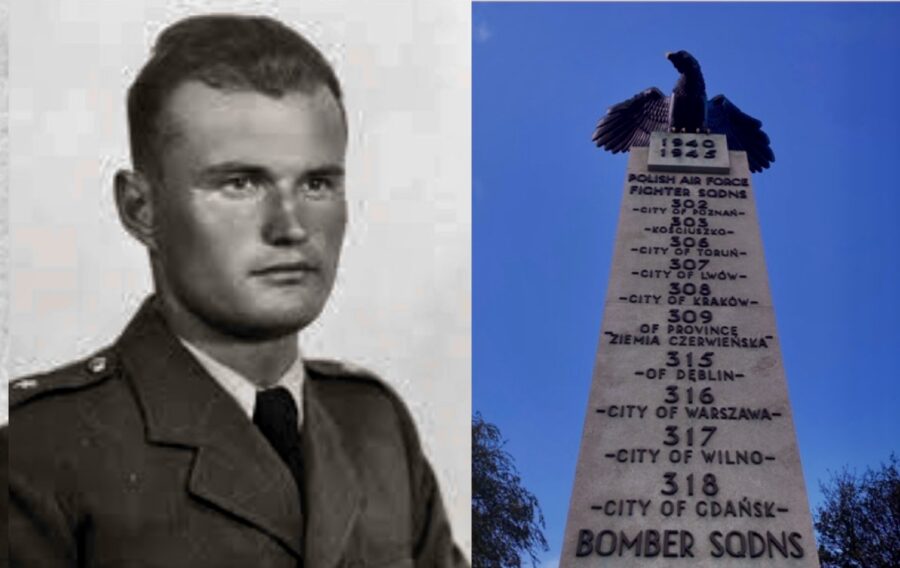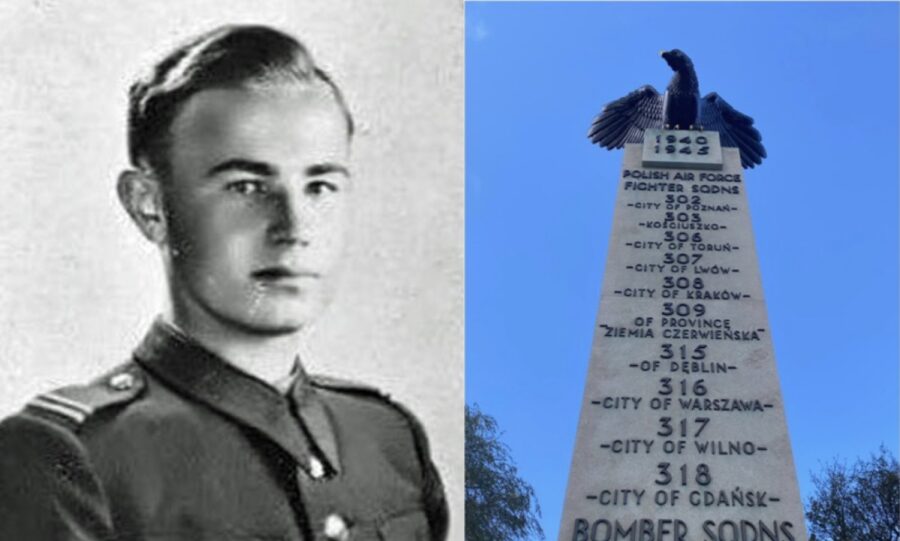At the end of December 1932, Marian Rejewski read the first secret dispatch sent via the German coding machine ‘Enigma’. The co-authors of breaking the ‘Enigma’ code were Jerzy Różycki and Henryk Zygalski.
Polish scientists Rejewski, Różycki and Zygalski, students at the University of Poznań, attended a course for cryptologists organised at the university with the participation of army officers.
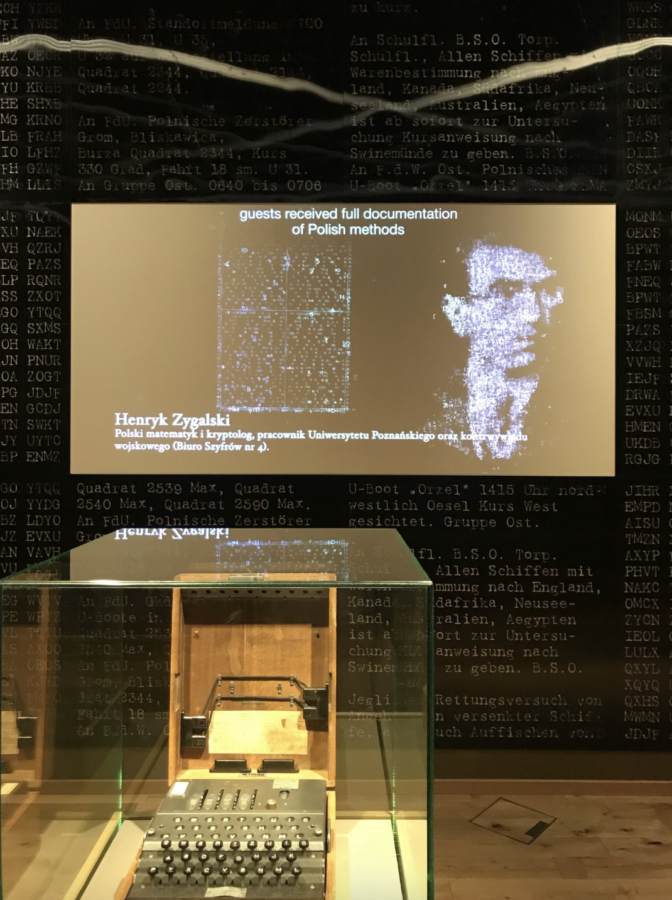
The idea to organise that course came from Lt. Col. Maksymilian Ciężki, the head of the Cypher Bureau who, together with other Polish experts, was responsible for the breaking of the Bolshevik Russian code during the Red Army offensive on Poland and the battle of Warsaw in 1920.
After completing the course in 1930, they were employed at the Cypher Bureau of the General Staff of the Polish Army. They worked on a secret operation to break the German electromechanical coding machine Enigma, which was constructed in the 1920s to be used for secret commercial correspondence. However, it was soon used by the German armed forces.
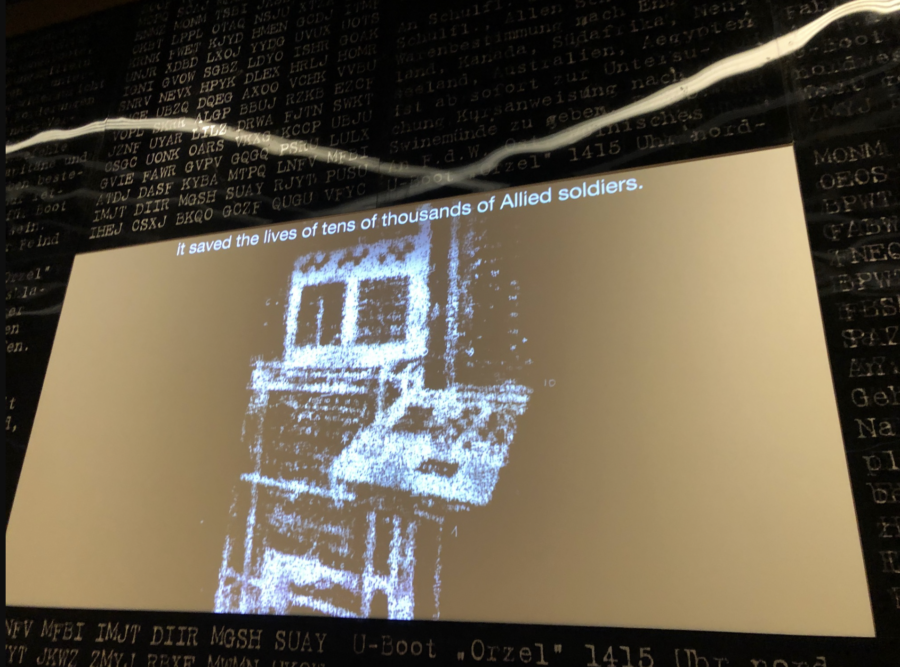
The small device resembles a classic typewriter generated 3*10114 coding combinations. The complexity of the code was more complicated than any previous method of coding the secret correspondence.
At that time British intelligence considered the ‘Enigma’ code impossible to break and gave up on its studies. The British even stopped intercepting German secret dispatches for an entire 10-year pre-war period, deciding that it was a waste of time to record texts that would prove impossible to read anyway.
At that time, breaking the code was considered almost impossible. However, the three Poles were able to break it by using a mathematical method instead of focusing on the linguistic part of its mystery. That idea was formed by Lt. Col. Maksymilian Ciężki of the Cypher Bureau.
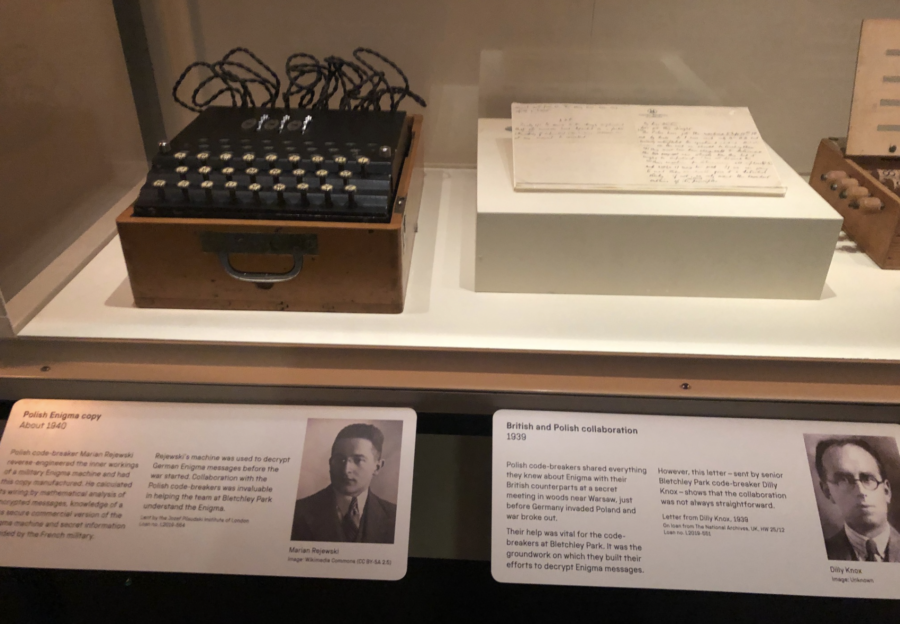
The breakthrough came thanks to the cooperation with French intelligence and the acquisition of some information, through intelligence, from the German side. The Poles repurchased data on the operation of the ‘Enigma’ from a German who was active in the German cypher bureau. The brief seizure of one of the coding machines also contributed to the success.
The group of Poles designed a copy of the ‘Enigma’ coding machine. Copies of the device were manufactured at the ‘AVA’ Radio Engineering Plant in Warsaw.
From now on the work of the Bureau was much more simple – using so-called ‘Zygalski sheets’ that provided the first key for the daily setting of the machine, while later mechanical-electrical devices called ‘cryptographic bombs’ were used to determine the cypher key for the day. This ensured that the frequent cypher changes made by the Germans were resolved in real time.
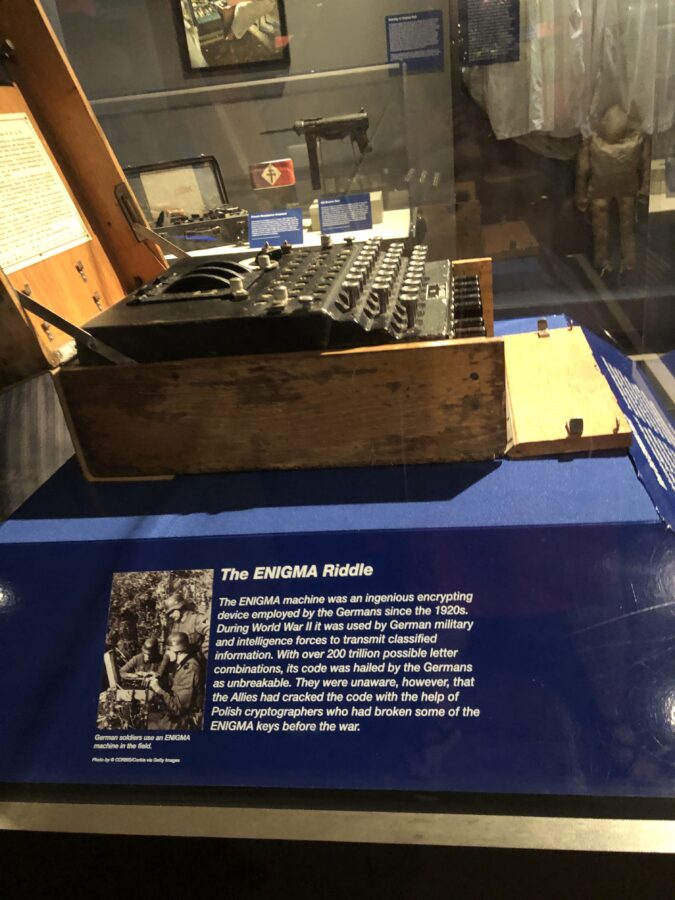
For almost seven years, Polish intelligence shared the decrypted German military dispatches, obtained through the work of the Polish Cipher Bureau, with the French and English partners. However, the method of obtaining the information was not disclosed.
In the summer of 1939, the Polish military authorities delivered their copies of the ‘Enigma’ machine to the Allies in France and the UK, together with detailed information about the path to breaking the code.
In September 1939, Marian Rejewski, Jerzy Różycki and Henryk Zygalski evacuated via Romania to France. Jerzy Różycki died in January 1942 on a ship that sank in the Mediterranean in mysterious circumstances. The two remaining mathematicians continued to work on German secret communication methods while working in a Polish Army unit in the UK.
Work on breaking the next-generation versions of the Enigma code continued at the British Cryptology Centre at Bletchley Park.
It was only thanks to the capture of the German submarine U-110 and four other ships, which carried the ‘Enigma’ cypher machines along with codebooks, that the British managed to break the most difficult code version designed for the German Kriegsmarine.
It was the Poles who laid the foundations to break the code, but for many years the achievements were described as solely the result of the British experts’ work at Bletchley Park.
According to Polish historians, many post-war authors who wrote about the story of the breaking of the ‘Enigma’ code knew that the British had a system for reading the ‘Enigma’ codes, but were unable to present the entire story of how it was broken.
The first official information about the Polish contribution to the decryption of ‘Enigma’ was mentioned in the early 1970s. However, official confirmation by the British of the role of Poles came only after Poland acceded to NATO in 1999.
According to historians, thanks to the pre-war study of the Polish mathematicians the Second World War ended 2-3 years earlier than it would if the Germans had been able to use secret communication.
In 2000, Marian Rejewski, Jerzy Różycki and Henryk Zygalski were posthumously awarded the Grand Crosses of the Order of Polonia Restituta.
Source: Dzieje.pl, Polskie Radio, ciekawostkihistoryczne.pl
Photo: British Poles at the Museum of the Second World War in Gdańsk , the WW2 Museum in New Orlean and the Science Museum in London
Tomasz Modrzejewski


